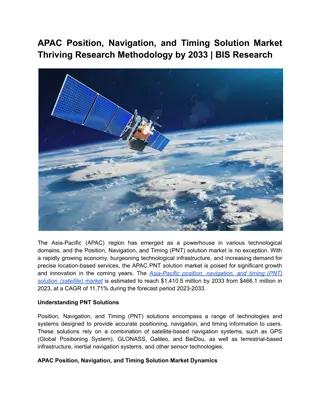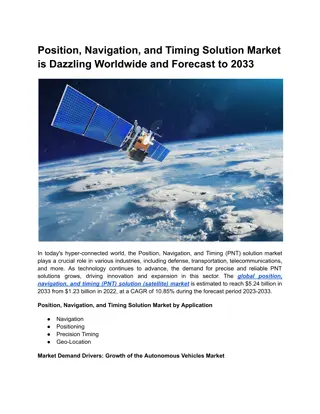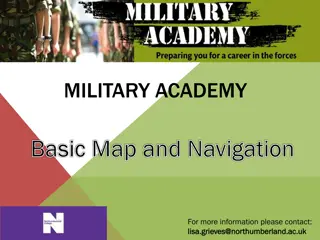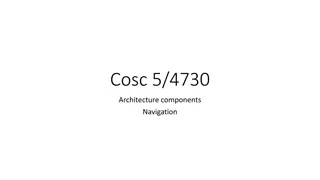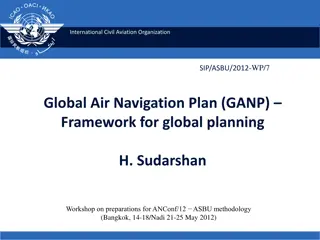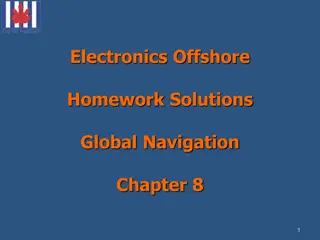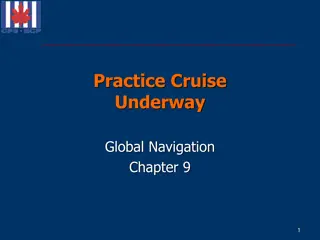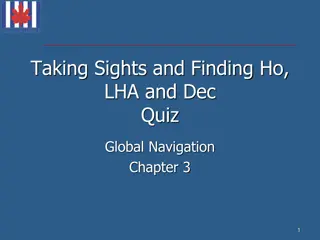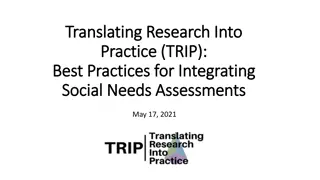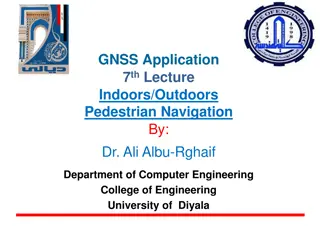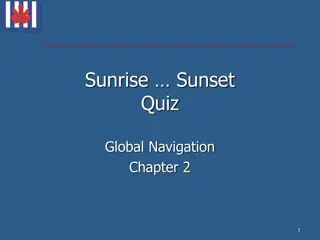Enhancing Document Navigation Efficiency
Speech recognition in document navigation is often frustrating and error-prone, yet rarely studied. This image-packed presentation introduces innovative navigation proposals and evaluation metrics to improve task efficiency, offering insights from expert interviews and practical solutions for easier and more accurate document navigation. Discover advanced methods like auto-scroll, unique keypad grids, and diverse navigation modes for a seamless user experience.
Download Presentation

Please find below an Image/Link to download the presentation.
The content on the website is provided AS IS for your information and personal use only. It may not be sold, licensed, or shared on other websites without obtaining consent from the author.If you encounter any issues during the download, it is possible that the publisher has removed the file from their server.
You are allowed to download the files provided on this website for personal or commercial use, subject to the condition that they are used lawfully. All files are the property of their respective owners.
The content on the website is provided AS IS for your information and personal use only. It may not be sold, licensed, or shared on other websites without obtaining consent from the author.
E N D
Presentation Transcript
Introduction and Motivation Speech recognition is cumbersome Document navigation and editing tasks rarely studied Commercial tools support two navigation methods Move down five lines, move right four words Go to The quick brown fox SLOW! FRUSTRATING! ERROR-PRONE! We say Let the computer do the walking
Expert Interview Experience with speech recognition Satisfaction with speech recognition Suggestions for improvements Comments/opinions on our proposals
Navigation Proposals 4. Auto-scroll Go down faster faster slower stop Go right faster stop 1. Move down five lines, move right four words 2. Go to The quick brown fox 5. Auto-scroll and pause at natural landmarks: section headers, paragraphs, and user- defined landmarks: middle of page, topic sentence 3. Go to page 3, paragraph 2, sentence 5, word 8, character 4.
Navigation Proposals (Moving within a page) 1 2 3 4 5 6 7 8 9 6. Hierarchical Keypad Grid 7. Sunray 1 7 2 6 3 5 4 8. X-and-Y
Navigate document Forward Short, medium, long Backwards Medium Then, highlight short stretch of text 3 Documents Familiar Read once Unknown Pilot Study Pre-interview Post-interview Video taped 3 Modes Keyboard+Mouse, SR, SpeedNav 4 subjects How do we ensure that subjects familiar documents are matched? Will document retention affect repeated task performance? Non-impaired Novice SR Motor-impaired Novice SR Non-impaired SR expert Motor-impaired SR expert
Evaluation Metrics Time to completion Number of commands spoken Number of words spoken Subjective approval Training time Fatigue Navigation Errors Undershoot Overshoot Inappropriate scroll speed Highlighting Errors Start position incorrect #chars, words, sentences End position incorrect #chars, words, sentences Should application record timestamps of user to make timing easier? Measure long distance (between screen) navigation technique separately from short distance (on same screen) navigation? Command recognition errors
Design Questions Cursor Default scroll in Word leaves cursor at bottom -- can t read what s below the screen! Scroll with cursor on left margin, right margin, or center? How might position affect ability to scan left and right? Cursor movement draws the eye; keep cursor stationary and move document instead? Sunray Option: Can people follow diagonal cursor movement? Speed Need various starting speeds and speed multipliers. User- controllable? Speech recognition adds one second delay! Causes overshoot! User must anticipate when to stop.




